
Montpellier: the great building
The Count opens his arms wide, gesturing around the hacienda (impeccable flower beds trimmed all around, lush gardens and their flourishing rows of vines), "This is a wonderfully fertile land ", he exclaims enthusiastically. He encourages me to try his wines, especially his reds . This is the kind of epicurean exchange one would love to have with a vineyard owner from the south of France. In this bucolic panorama, a singular detail stands out: Château de Flaugergues, the elegant 18th century mansion , Y 30 hectares of vineyards , is close to one of the liveliest European cities.
In the renovated old Montpellier the energy is palpable. Half of the population (about 260,000) is under 35 years of age; there is an incredible display of cutting-edge architecture, with works underway, and it is one of the Europe's fastest growing urban centers . In fact, in just over a decade the IT neighborhood has expanded to such an extent that it has reached the Château de Flaugergues and its vineyards.
A couple of years ago, the modern restaurant managed by the count's son and his daughter-in-law opened, Pierre and Marie de Colbert . On weekdays, around 12.30pm, the place fills with elegant workers from neighboring offices. The day I was there everyone suddenly left at 2pm, so the space was mine for half an hour, until visitors started arriving for the afternoon tastings.
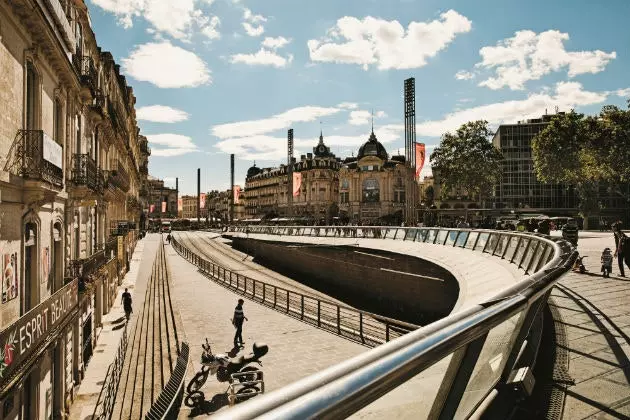
Montpellier, one of the fastest growing urban centers in Europe
Château de Flaugergues is a good example of Montpellier, as a fable of two cities: the historical scene and the new one, frenetically expansive . To this fascinating mixture we add: it is a destination, literally, hot . blessed by palm trees and sun rays (they say there are 300 sunny days a year) , Montpellier is a lively enclave on the sea. Curiously, it is a Mediterranean destination that is not in high demand on the tourist radar given that it is located in the least chic strip of the French south coast. It is an advantage: even in high season, no crowds and since it does not compete with Nice or St. Tropez, neither do their prices.
The first attraction of the city is its mediaeval heart , a captivating tangle of car-challenging lanes and alleys, smooth honey-colored stone reminded me of Oxford (with better weather). The Montpellier center also has an advantage over Oxford: the energy and its consistent beauty . Its streets are lined with its stylish windows and small boutiques , in its leafy squares melts the social life of its cafes . In many ways, this is a newcomer who has never shed rookie status. Nîmes, Béziers and Narbonne, the other big cities near the coast of Languedoc-Roussillon They date from the Roman era or earlier. Montpelier He began to write his story at the end of the X century.
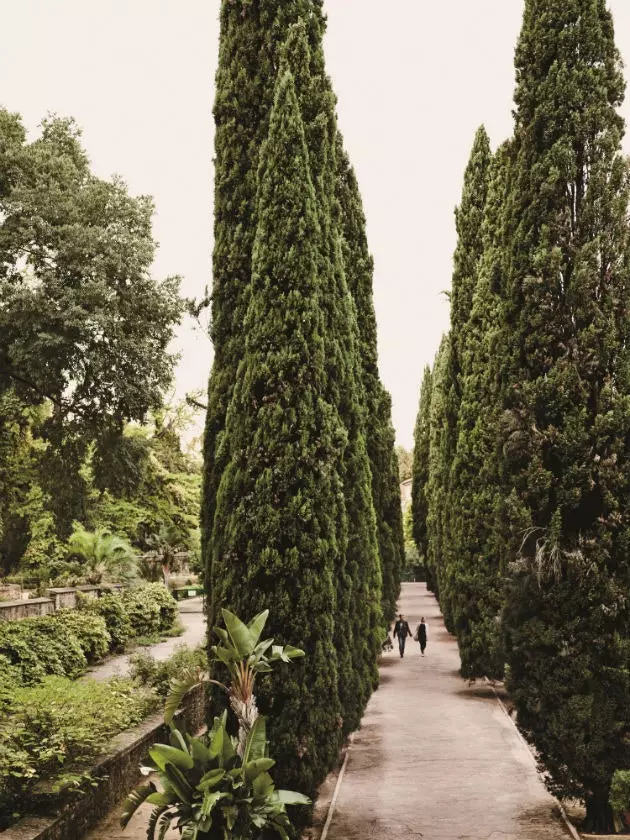
The Garden of Plants
Located in River Lez , with better access to the beach , quickly became an important commercial center and continued to prosper. And we move on to the 16th century, when the city became a stronghold of the Huguenots and, as such, suffered from the religious wars of France. Still, destruction was wrapped up in reconstruction and the city built its splendid architecture during the 17th and 18th centuries. The medieval organization of the streets remained almost identical, but the squares became places where the churches, converted into hôtels particuliers , shone with their wrought iron stairs, they were houses with a patio. The city even erected its Arc de Triomphe to glorify r (and placate) Louis XIV.
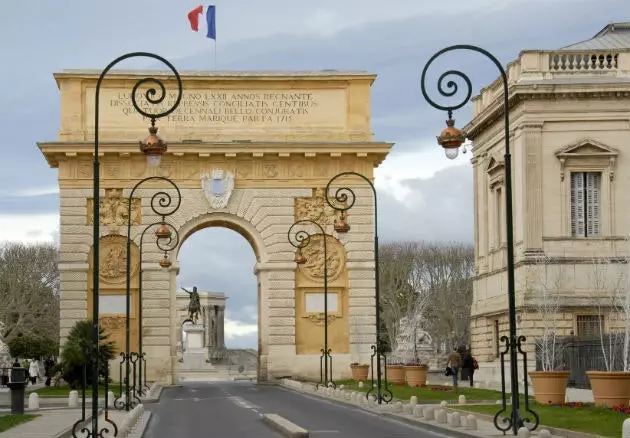
The city even erected its Arc de Triomphe to glorify Louis XIV.
The result? One of those interesting cities where you simply wander for hours between alleys, you enter without haste in its shops and restaurants to contemplate its medieval ceilings (in the ultra stylish of the light , on rue Saint-Côme, or Burguer & Blanquette, on rue Rosset) . In addition to contemplating the interior of the courtyards of great houses in a kind of treasure hunt: the Hôtel de Varennes, with its medieval passageways, and the garden of the Hôtel des Trésories de la Bourse, with its unique masonry, are open to the public on weekdays.
I spent a quarter of an hour cannau street , contemplating the stone faces of the portals and spying on the spectacular courtyard of the Hotel de Beaulac , when an employee of an architectural firm opened the door. In the historic center there are delicious secrets, so snooping is compulsive. On the street Jean-Jacques Rousseau I saw the inside of L'Atelier du Livre , where handcrafted books take shape. In Place Sainte-Anne I peered through the window at a violin workshop (later I learned that there are 12 luthiers working in the city).
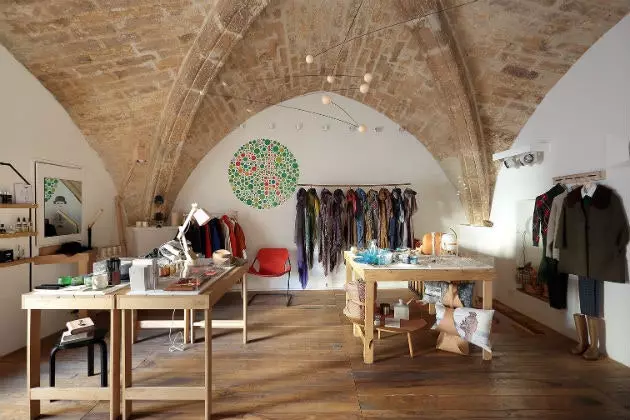
The ultra-stylish De la luce store
A rare rainy day allows you to explore its museums. Three of them are exceptional. Renovated in 2007, the Fabre Museum was developed thanks to a donation from the artist Francois-Xavier Fabre during the wine boom, at the beginning of the 19th century. I went through the Flemish and French art rooms (Rubens, Teniers, David, Delacroix) and then I went to the most valued pieces: Impressionist paintings Frederic Bazille , son of Montpellier, who tragically died young, and the abstract art of Pierre Soulages, who in 2005 donated more than 20 canvases, most of them bold studies in black that are strangely hypnotic. Down the street, in the Hotel Sabatier d'Espeyran , the Museum of Decorative Arts opened in 2010. The first floor exhibits extravagant 19th century furniture, the upper floor, a refined decoration neoclassical.
The most notable is the Atger Museum , with its wonderful collection of drawings by Fragonard, Watteau, Tiepolo and more. Semi-hidden and open only a few evenings a week, it is located in the glorious university school of medicine, an essential visit in Montpellier. The oldest active French school of medicine was a monastery . In the 16th century the building became the palace of the bishopric; and the church, in cathedral. After the Revolution, the Faculty of Medicine was incorporated (12th century). With flourishes: they built a botanical garden of medicinal plants . Today the Jardin de las Plantas is a quiet space, managed by the university, open to the public in the afternoons, and home to some 2,500 species.
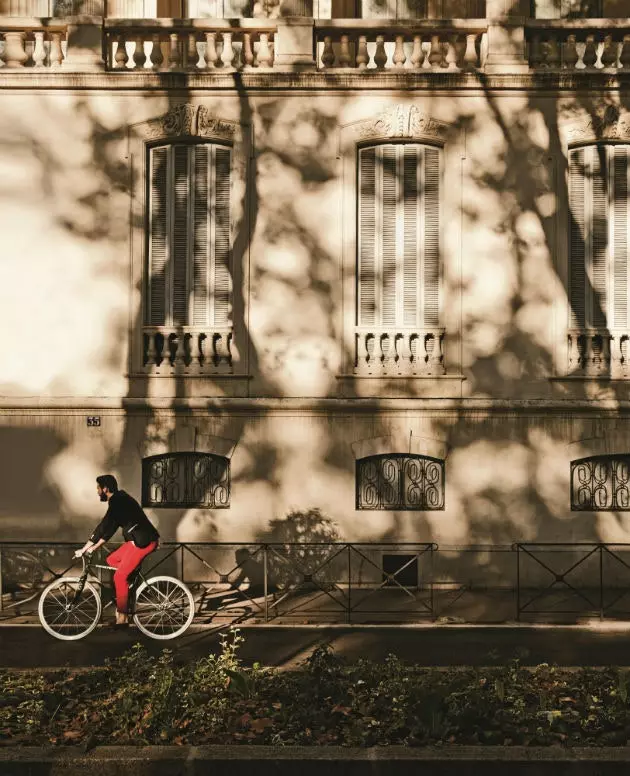
The facade of the Museum of Decorative Arts of Montpellier
I placed myself in a gastronomic garden in the city. Le Jardin des Sens is like a restaurant with rooms . Chic accommodations are generous (hardwood floors, dim lighting, modern closets in all 15 rooms, and a private pool in penthouse suite ), but not as much as its gastronomy. Jacques and Laurent , twin sons of a local winemaker, were 24 years old when they opened the restaurant in 1988 and transformed the urban dining scene. Today they run two other restaurants here (Insensé and Compagnie des Comptoirs) as well as numerous locations in France, Japan, China, Thailand and Singapore.
The Jardin des Sens, with one Michelin star , maintains the flagship and most nights they are there, overseeing the creation of their well-spiced dishes. Surrounded by greenery, the tiered conservatory is reminiscent of a theater where I marvel at the procession of exquisite recipes. The appetizers look like little works of art (seafood millefeuille, beet puree in a shot glass, zucchini mousse) and they taste amazing once I dare to try them.
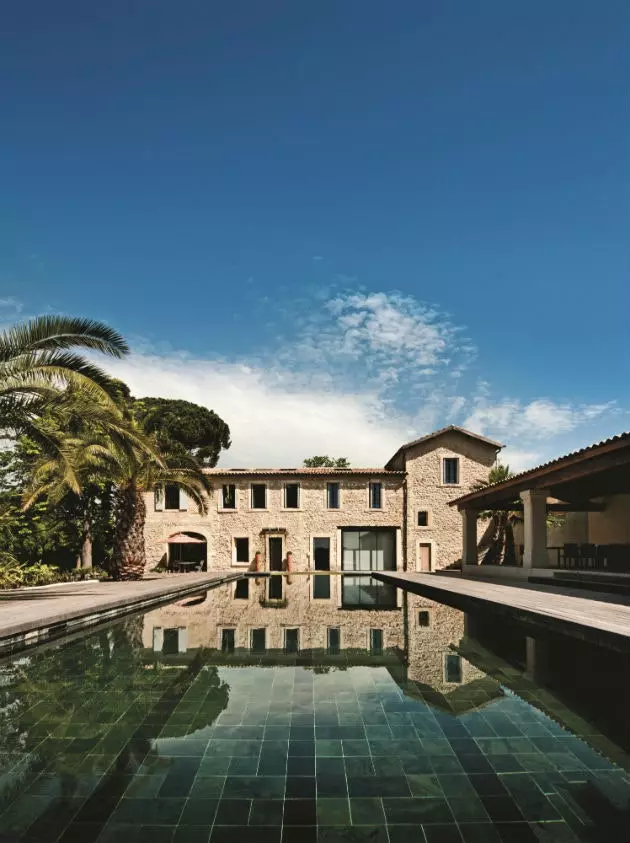
Villa Sarbelly, a rental house in the Domaine de Verchant
I spent two nights in a majestic hotel . Baudon de Mauny is an 18th-century mansion that opened as a guest house in 2008. It was the home of Alain de Bordas, whose wife Nathalie designed the ultra-modern interiors and impeccable restoration work. Some rooms boast plasterwork ; others are more minimalist . And gold mirrors hang over designer chairs. The elegant breakfast room was a dark courtyard. The hotel attracts visits from architects, Alain told me. In fact, Baudon de Mauny hosted Jean Nouvel, who was responsible for various projects in the city; Massimiliano Fuksas, whose hotel management school opened in 2012 in the Millénaire neighborhood; and Zaha Hadid, who designed the Pierresvives.
The reputation of a daring city at an architectural level comes from the 70s , when they built the neighborhood Antigone on old barracks . Conceived as a model of a Renaissance city, it is a colossal mix of offices and apartments from the Catalan Ricardo Bofill . Beyond, in the challenging new city, I found the scale of the unsettling Antigone : I felt like an ant as I walked through its pillars and arches. In the east, the zone of Port Marianne.
party for the variety of architectural styles , partly because of its apartment blocks, designed to live comfortably, apart from its main attractions. A lake bordered by bars and cafes and the Hotel de Ville , which shines behind a small pool. Designed by Jean Nouvel and Francois Fontes and opened in 2011, this responsible building looks like a big blue cube on one side. From another, it seems to turn green and takes the shape of the Arc de Triomphe, in a sort of replica.
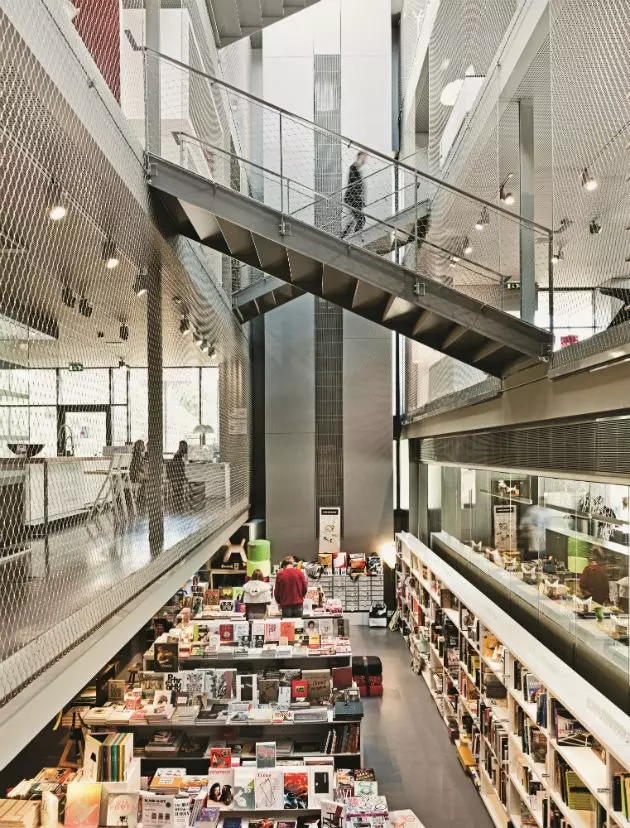
RBC design center store
Further down the avenue Raymond Dugrand , there is another of Jean Nouvel's buildings. The RBC Design Center It is a modern structure of steel and glass with a four-story atrium and several rooms that display state-of-the-art decoration. In another nod to a landmark in the city, this shelter is like a replica of the Museum of Decorative Arts. I visited the bookstore, sunk between several chairs, marveling at the wide range of products, then I took shelter on the terrace looking at the park where Montpellier's next project will take shape: a wellness center with spa designed by Philippe Starck.
The best way to observe the profound change in the city is to take a tram, a means of transport recovered in 2000, with two new lines in 2012. Elegant and designer, they have the style of a veteran art school: Christian Lacroix . My last morning here I took the blue Lacroix wagon with precious stones from the sea. He was heading for the coast, 11 kilometers away. I'm going through Antigone , overlooking the Hotel de Ville and by Port Marianne , with the cranes working. After crossing an almost agricultural landscape of wines interspersed with supermarkets, we almost reached the sea. The line does not reach the shore, the last section was by bus. As soon as I reached the beach, the clouds began to swirl. Disappointment? Well, maybe. But I gained the happy prospect of another tram ride design , back to that display of great architecture that is this city.
* This article is published in the Condé Nast Traveler magazine for October number 77. This issue is available in its digital version for iPad in the iTunes AppStore, and in the digital version for PC, Mac, Smartphone and iPad in the virtual newsstand by Zinio (on Smartphone devices: Android, PC/Mac, Win8, WebOS, Rim, iPad) . Also, you can find us on Google Play Newsstand.
*** You may also be interested in...**
- Secrets of impeccable Montpellier
- Architecture and gastronomy
- 42 things you have to do in France once in your life
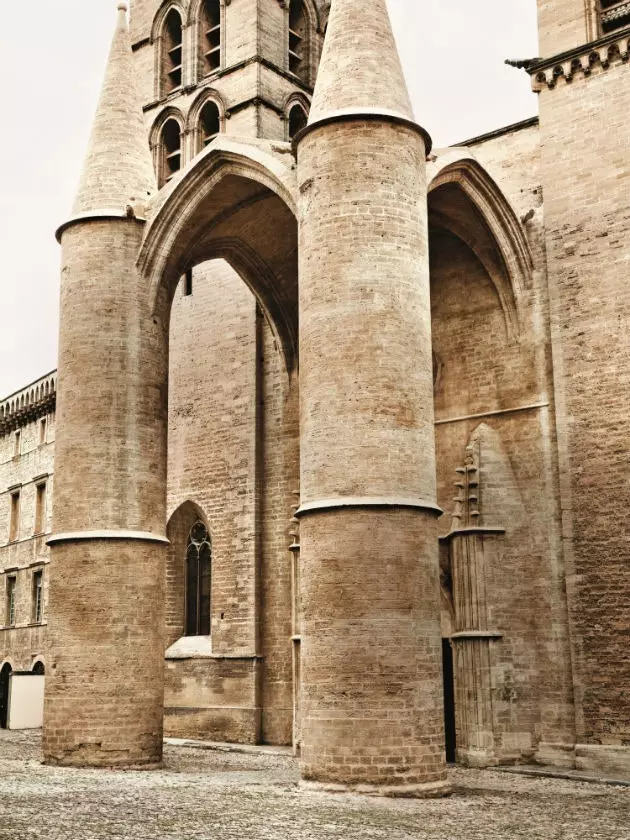
Montpellier: medieval building
